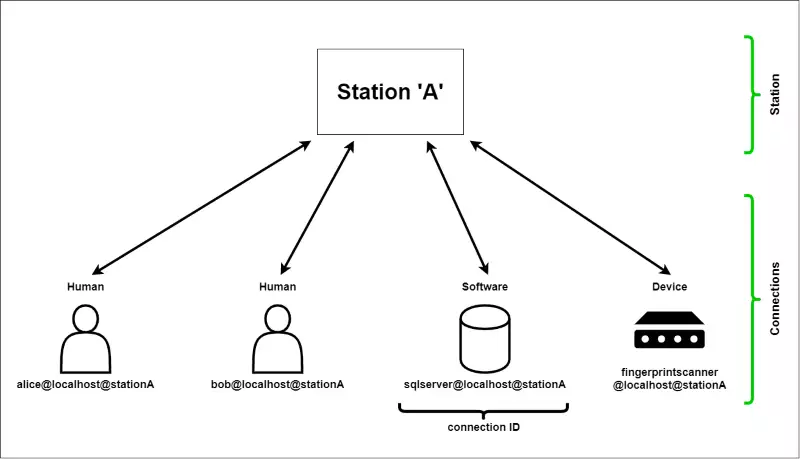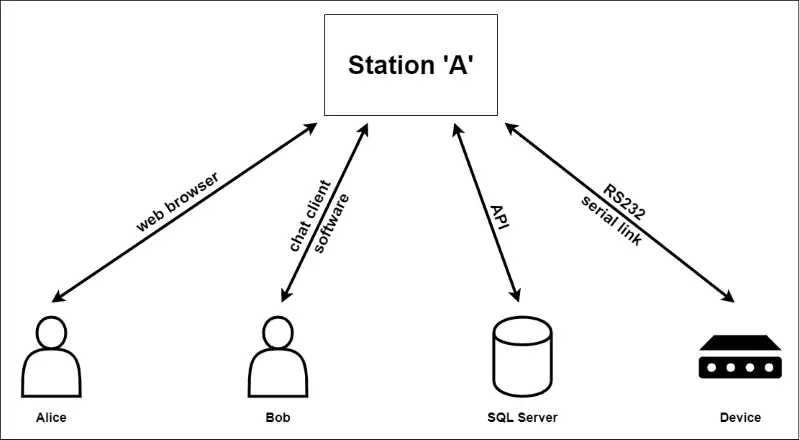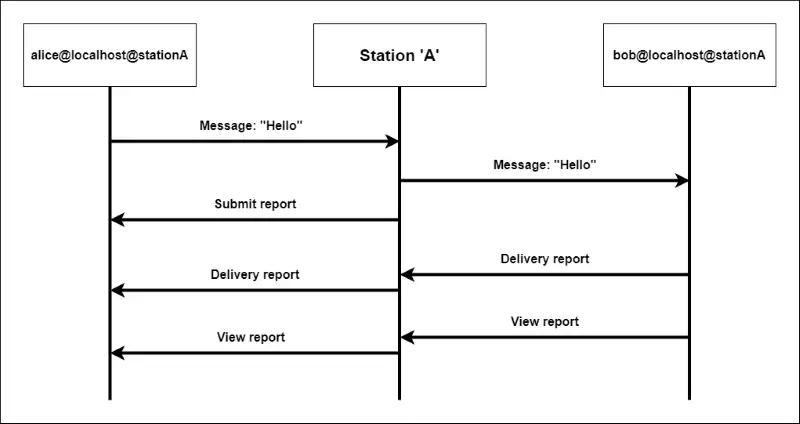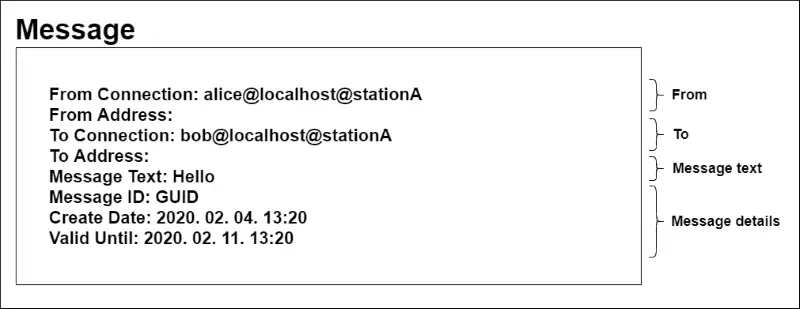Single station network
Single station network is the simplest setup of the available OS2S messaging networks. The main component of this configuration is the station that handles all local agents. These agents can be a normal human user, but OS2S has got software and device support, which means this kind of agents are also capable of connecting to the station.

Each of the connections in the network identified by a Connection ID. This identifier contains three key segments that help localize the connection in the network. The first segment of the ID defines the name of the connection. The next part declares the domain of the connection. Then finally, the station ID identifies the station where the connection is linked to.

Connection types in Single station network
The link between the connection and the station can be established in many different ways. The simple human agents can connect by using their web browser or the chat client. In case the connection is a software or a server, the link settled using an API. Other devices can use for example an RS232 cable to connect to the station.

Messaging in Single station network
The sending of the message can be cut into separate operations. First,
the sender connection sends the message to the station. The station examines
that if it can forward it to the destination and sends it if the target is available.
Then, the station addresses a submit report to the sender.
When the message arrives at the destination, it sends a delivery report to the station,
which forwards it to the sender connection. Lastly, when the recipient views
the message, it sends a view report to the station which delivers the report to the sender.
The following figure shows the communication between stations when sending a message.

The message contains key-value pairs that define every detail.
These pairs can be divided into four parts. The first one defines
the sender connection. Next, the message contains the details of the
recipient connection. The next value is the message text and finally,
the last values define the ID, create and expiration date of the message.
The figure below demonstrates an example message document.

